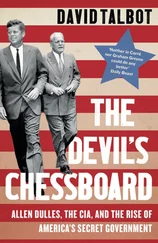After entering one of the buildings and walking down a long corridor lined with surveillance cameras, the officers reached their destination: a fortified cellblock in the heart of Pelican Bay, California’s most notorious prison. They could hear inmates moving in their ten-by-twelve, window-less cement cells. Pelican Bay housed more than three thousand inmates, men who were considered too violent for any other state prison and had, in the parlance of correctional officers, “earned their way in.” But the men on the cellblock, which was known as the Hole, were considered so dangerous that they had been segregated from this already segregated population.
Four prisoners were ordered to remove their gold jumpsuits and slide them through a tray slot. While some officers searched their belongings, others, using flashlights, peered through holes in the steel doors to examine the inmates’ ears, nostrils, and anal cavities. To make sure that the prisoners had no weapons “keistered” inside them, the guards instructed them to bend down three times; if they refused, the guards would know that they were afraid to puncture their intestines with a shank. Once the search was complete, the inmates were shackled and escorted to a nearby landing strip, where they were loaded onto an unmarked airplane.
All across the country, agents were fanning out to prisons. They seized a fifth inmate from a maximum-security prison in Concord, New Hampshire. They took another from a jail in Sacramento, California. Then they approached the Administrative Maximum Prison, in Florence, Colorado, a “supermax” encircled by snow-covered ravines and renowned as “the Alcatraz of the Rockies.” There, in the most secure federal penitentiary in the country-a place that housed Ted Kaczynski, the Unabomber, and Ramzi Yousef, the man behind the bombing of the World Trade Center, in 1993-agents apprehended four inmates who were allegedly responsible for more than a dozen prison murders.
Before long, the marshals had rounded up twenty-nine inmates-all of whom were among the most feared men in the American prison system. One had strangled an inmate with his bare hands; another had poisoned a fellow-prisoner. A man nicknamed the Beast was thought to have ordered an attack on an inmate who had shoved him during a basketball game; the inmate was subsequently stabbed seventy-one times and his eye was gouged out.
Then there was Barry Mills, who was known as the Baron. Soft-spoken and intense, with a gleaming bald head, he was described by one of his former prosecutors as a “cunning, calculating killer.” He liked to crochet in his cell and, according to authorities, compose lists of enemies to kill. In a previous court case, he testified that “we live… in a different society than you do. There is justified violence in our society. I’m here to tell you that. I’m here to tell all you that.” He was not, he conceded, “a peaceful man,” and “if you disrespect me or one of my friends, I will readily and to the very best of my ability engage you in a full combat mode. That’s what I’m about.” Once, at a maximum-security prison in Georgia, Mills was found guilty of luring an inmate into a bathroom stall and nearly decapitating him with a knife.
Along with the Baron and the other prisoners, five women on the outside were also seized, as well as three ex-cons and a former prison guard. Most of those apprehended-there were forty in total-were transported on a Boeing 727, with their legs and arms shackled to their seats, while guards patrolled the aisles, their rifles sealed in compartments out of arm’s reach. Days later, the prisoners ended up in a Los Angeles courtroom, where they were accused of being members of an elaborate criminal conspiracy directed by the Aryan Brotherhood, or the Brand. Authorities had once dismissed the Aryan Brotherhood as a fringe white-supremacist gang; now, however, they concluded that what prisoners had claimed for decades was true-namely, that the gang’s hundred or so members, all convicted felons, had gradually taken control of large parts of the nation’s maximum-security prisons, ruling over thousands of inmates and transforming themselves into a powerful criminal organization.
The Brand, authorities say, established drug-trafficking, prostitution, and extortion rackets in prisons across the country. Its leaders, often working out of barren cells in solitary confinement, allegedly ordered scores of stabbings and murders. They killed rival gang members; they killed blacks and homosexuals and child molesters; they killed snitches; they killed people who stole their drugs, or owed them a few hundred dollars; they killed prison guards; they killed for hire and for free; they killed, most of all, in order to impose a culture of terror that would solidify their power. And, because the Brotherhood is far more cloistered than other gangs, it was able to operate largely with impunity for decades-and remain all but invisible to the outside world. “It is a true secret society,” Mark Hamm, a prison sociologist, told me.
For the first time, on August 28, 2002, that world cracked open. After more than a decade of trying to infiltrate the Brand’s operations, a relatively unknown Assistant United States Attorney from California named Gregory Jessner indicted virtually the entire suspected leadership of the gang. He had investigated hundreds of crimes linked to the gang; some were cold cases that reached back nearly forty years. In the indictment, which ran to a hundred and ten pages, Jessner charged Brand leaders with carrying out stabbings, strangulations, poisonings, contract hits, conspiracy to commit murder, extortion, robbery, and narcotics trafficking. The case, which was expected to go to trial in 2005, could lead to as many as twenty-three death-penalty convictions-more than any in American history.
One morning in 2003, I visited the United States Attorney’s office in downtown Los Angeles, where the prosecution was preparing to arraign the last of the forty defendants. As I waited in the lobby, a slender young man appeared in a gray suit. He had short brown hair, and he carried a folder under his arm as if he were a paralegal. Unlike the attorneys around him, he spoke in a soft, almost reticent voice. He introduced himself as Gregory Jessner.
“I’m forty-two,” he told me, as if he were often greeted with similar astonishment. “Believe it or not, I used to look much younger.” He reached into his pocket and revealed an old office I.D. He looked seventeen.
He led me back into his office, which had almost nothing on the walls and appeared to be decorated solely with boxes from the case, one stacked upon the other. On his desk were several black-and-white photographs, including one of an inmate who had been strangled by the gang.
“An Aryan brother went in his cell and tied a garrote around his neck,” Jessner said. He held out his hands, demonstrating, with tapered fingers, how an Aryan Brotherhood member had braided strips of a bedsheet into a noose. “This is a homicidal organization,” he said. “That’s what they do. They kill people.”
He was accustomed, he explained, to murder cases, but he had been shocked by the gang’s brutality. “I suspect they kill more than the Mafia,” he said. “They kill more than any single drug trafficker. There are a lot of gang-related deaths on the streets, but they are usually more disorganized and random.” He paused, as if calculating various numbers in his head. “I think they may be the most murderous criminal organization in the United States.”

There are hundreds of gangs in this country: the Crips, the Bloods, the Latin Dragons, the Dark Side Nation, the Lynch Mob. But the Aryan Brotherhood is one of the few gangs that were born in prison. In 1964, as the nation’s racial unrest spread into the penitentiaries, a clique of white inmates at San Quentin prison, in Marin County, California, began gathering in the yard. The men were mostly motorcycle bikers with long hair and handlebar mustaches; a few were neo-Nazis with tattoos of swastikas. Together, they decided to strike against the blacks, who were forming their own militant group, called the Black Guerrilla Family, under the influence of the celebrated prison leader George Jackson. Initially, the whites called themselves the Diamond Tooth Gang, and as they roamed the yard they were unmistakable: pieces of glass embedded in their teeth glinted in the sunlight.
Читать дальше












